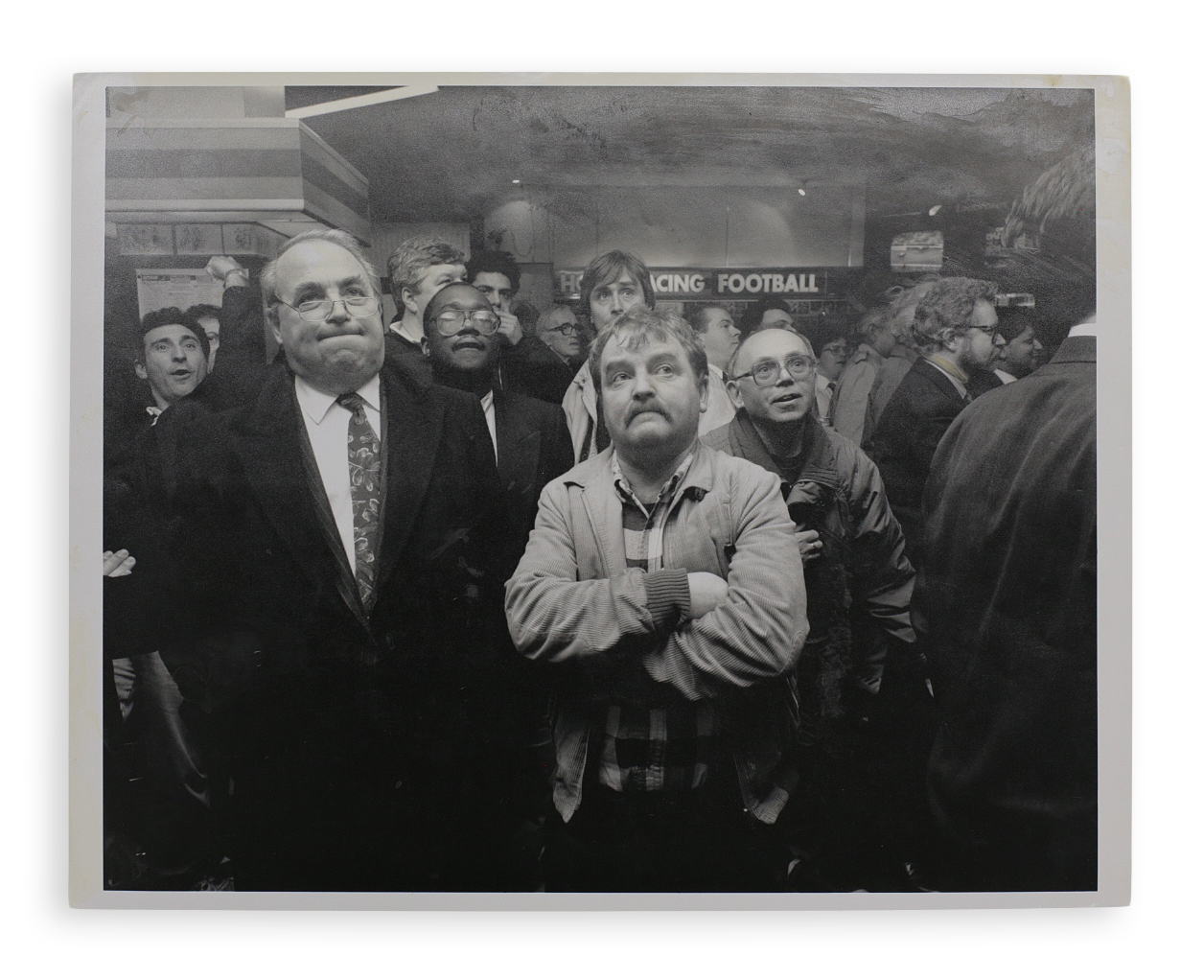I approached the Magnum archive with the eye of the historian and anthropologist.
What interests me is people, their experiences and how they navigate their world. I was consequently not only interested in the ostensible ‘subject’ of the photograph, but what happens in the background, the people watching or simply going about their daily business. Faced with the possibility of people’s experiences, their very social being, one of course encounters questions of representation and its political baggage. But that I would argue is only part of the narrative. What interests me is the idea that the photographic trace is not merely an act of representation, but an inscription of an experience, however ordinary and banal, that somebody lived through, and that carries with it a trace of their social being.
This photograph, taken by Carl De Keyser in a London betting shop, epitomises this strand in my interest. The group of men, and they are all
men, are entirely absorbed in their own reaction to some sports results. The range of expressions, gestures, comportments, foci of attention, are all highly individual as people with transitory experiences, but at the same time they are bound together temporally through the act of watching and being. Behind them other groups are absorbed in different directions.
But it also raises others, for the possibility of these thoughts is vested in the random inclusivity of the image. We may attribute consciousnesses, authorships and aesthetic perception to photographers, and it is that cocktail of perception that makes the photograph arresting and focuses
attention in certain ways. It is the random inclusivity of the photographic trace which allows us to ask questions about what is both outside the frame of the photograph – we don’t know exactly what absorbs them – and beneath the surfaces of its inscription. One faces people absorbed in their own experiences, ideas and emotions.
What interests me is how the banal qualities of the everyday performance of such absorptions constitute so powerful a human connection. This is because they are traces of their ‘presence’ – their experience of the moment and reactions to it. To me the camera here does not objectify but traces deep and perhaps shifting subjectivities. This might be too humanist a view for some tastes, but as an historian and anthropologist I never cease to wonder about human ‘being’.
This photograph therefore demonstrates what photography does so well. It intensifies, or traces people in their banal existence as what philosopher of history Eelco Runia called ‘stowaways’ – what is absently and unintentionally present on the plane of time. Photographs, as planes of time, are full of such stowaways, caught in the random excess of photograph. They are not necessarily the subject of the photographs – although they sometimes are – but living through that moment of inscription. They are people watching, or being watched, absorbed in the demands of the moment. Sometimes they barely register, sometimes one feels the power and concentration of their scrutiny, sometimes one feels one’s own act of watching. Thus all my selection, which this image typifies, address the qualities of watching, of absorption, of the serendipity of the visual moment both for us as viewers and those in the photographs.
–
This article was commissioned as part of the BPB14 exhibition Magnum: One Archive, Three Views at the De La Warr Pavilion on display until January 2015

